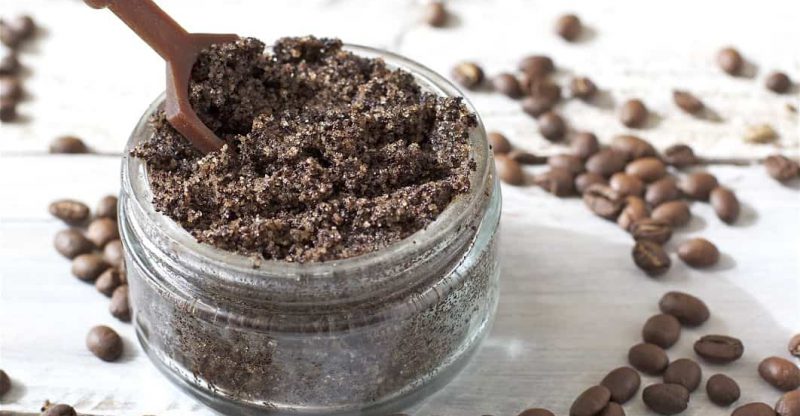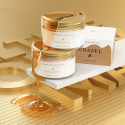Natural exfoliator – something more than at-home method for smooth skin
Body exfoliator means smooth and supple skin in a matter of minutes. No wonder we all love it so much. It deeply cleanses the skin, after the use of exfoliators we feel well-taken care of and flawless. Did you know that exfoliator is something more than just nice in touch skin? How does it impact skin condition?
Why should you exfoliate?
Stratum disjunctum – sounds like a spell straight from the Harry Potter world, doesn’t it? Nonetheless, it is a very ‘muggle’ and professional term for the calloused epidermis, i.e. the surface skin layer. This layer has direct contact with external factors and that is where dead skin cells migrate from the deeper skin layers. Due to the fact that dead skin cells are redundant, they flake away from the stratum disjunctum.
In this context, the calloused epidermis is like a… landfill of unnecessary ‘things’ which our skin is elegantly getting rid of. The rest is on us because this external scrap may disturb skin processes, cause imperfections, rash, and block the way for valuable ingredients from balms and oils. For this reason, the layer needs to be exfoliated. Calloused epidermis won’t just ‘go away’ on its own even though skin tries really hard and constantly peels but does it really slowly and inefficiently. This is where exfoliator comes in.
Why does the exfoliator matter this much?
The name ‘exfoliator’ comes from the word exfoliate. It tells you all about the function this product holds in cosmetology. It exfoliates all redundant metabolite that was ‘thrown away’ by our skin. Thanks to it, the exfoliation process happens faster and more effectively.
Exfoliator allows you to get rid of toxins and excess sebum. By removing dead skin cells, the exfoliator forces the epidermis to produce new cells. What is more, exfoliator stimulates blood circulation, brightens hyperpigmentations, flattens scars, and minor wrinkles.
Is this all when it comes to its benefits? Not even close! Exfoliator boosts nutrients absorption from balms and other skin care cosmetics. On top of it all, it leaves us with the effect we all love, which is smooth, flawless skin.
The types of exfoliators
The skin has different types, that is why there are various types of exfoliators. Some of them are suitable for all skin types, others are recommended only for sensitive and irritation prone skin.
The easiest way to divide exfoliators is by the method of action, so we have gentle enzymatic exfoliators and mechanical exfoliation.
- Mechanical exfoliation is also called scrub for body or face and it contains exfoliating substances which with granules peels the dead skin cells.
- Gentle enzymatic exfoliator in noninvasive and doesn’t require rubbing and its action is based on exfoliating chemical or organic substances – mineral or plant-based.
Which exfoliator should you choose?
The choice of exfoliator depends on the skin type, how sensitive it is, and what are its needs. If you have skin with stretch marks or cellulite, you should choose an exfoliator with additional toning properties that eliminate the cellulite. Keep in mind that skin irritations, redness, widen and broken blood veins, varicose veins, acne, and rosacea are a contradiction to the use of mechanical exfoliation and require the use of a milder product that doesn’t require rubbing. A lot of exfoliators can be made at home, you just need to combine exfoliating substances (salt, sugar, oats, ground coffee) with oils, honey, cosmetic base, plant-based butter (shea or coffee). When it comes to sensitive skin, the product of choice is usually a cosmetic clay. it cleanses and has a lifting, toning, and detoxifying properties. Red and pink clay strengthens blood vessels.
How often should you use an exfoliator?
You should determine it individually for your needs by observing the skin’s reactions. In general, exfoliator should be done up to twice a week. However, it depends on individual preferences and skin needs.






Leave a Reply